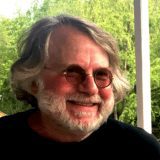Including Disability and Belonging in Diversity, Equity and Inclusion

Posted in: Parenting Concerns
Topics: Hot Topics
It is not always clear that disability is included in justice, equity, diversity, and inclusion (JEDI) initiatives and though schools and many organizations have made efforts to create a fair, open, diverse and inclusive workplaces, disability representation has often been absent from modern initiatives. Disability represents a range of differences which can have a tremendous impact on one’s life experience, facing extra challenges in accessing education, employment, healthcare, and other necessary resources. As such, including disability in (JEDI) activities, initiatives, programs and strategies are essential in making these efforts truly just, diverse, equitable, and inclusive. Individuals with disabilities were long neglected in schools and workplaces until 1990 when the Americans with Disabilities Act was passed into law. This law ensures that individuals with disabilities are not subject to discrimination and that their rights for equity, including accommodations, if needed are upheld.
There is diversity among youth with disabilities, whether visible or invisible, ranging from physical conditions and/or appearance, medical illnesses, intellectual and cognitive disabilities, social emotional disabilities, mental health conditions, and/or learning disabilities. And disability knows no racial, ethnicity, cultural, gender or sexuality barriers. It is a part of our humanity. Yet, it is often excluded from conversations about JEDI. While it’s estimated that, as many as 16% of the world’s population, live with disabilities, disability is not often viewed as a form of diversity in the same way as we might view race, gender, or ethnicity. Disability as a form of diversity is often misunderstood and overlooked. Moreover, it is frequently stigmatized leading to mental health disorders, including both physical disabilities in wheelchair bound individuals, or in those with specific learning disabilities.
These youngsters that require more individualized attention are often overlooked in JEDI in their schools, athletic endeavors, and community organizations. So too are adults in the workplace. The accommodations and accessibility young people and adults receive are important for them to perform to their full potential. Further, they are vital parts of organizations and have important skills and experiences that contribute to their communities.
According to the Center for Disease Control, Disability Inclusion promoting the involvement of people with disabilities in everyday activities and encouraging them to have roles similar to their peers who do not have a disability promotes diversity, belonging, and inclusion. Disability inclusion affords those with disabilities an equal opportunity to succeed, to learn, and to have a sense of community and belonging. Creating environments where all youngsters and adults feel accepted, valued, and heard is critical in promoting psychological safety which leads to greater connection and engagement. This applies not only to other members of a community with disabilities but also to others who are or feel marginalized because they are “different,” e.g. LGBTQ, immigrants, and people of color. It also enriches the rest of the community, who have much to learn from their resilience, coping skills, stress management and their lived experience. We learn how much we benefit from them as much as they benefit from us.
We support a proactive approach to planning and implementing policies, practices, and frameworks that center primarily around disability inclusion, empowerment, and success. This is an imperative to change history and consistently include disability in JEDI efforts, initiatives, and strategies, fostering creativity, innovation, and engagement.
Ways to include disability and belonging in JEDI in school, occupational and community settings:
- Create a culture where belonging and inclusivity is expected and celebrated
- Initiate policies that include assessment and implementation of needed accommodations.
- When incorporating inclusive practices, tools, and technologies, prioritize accessibility
- Educate youth, parents, caregivers and administrators about the nature of a wide range of disabilities and the potential of the individual.
- Maintain zero tolerance for stigma, discrimination and/or marginalizing individuals with disabilities
- Ensure that application and hiring practices include individuals with disabilities as it also does for gender, race, ethnicity and sexual identity and orientation.
- Invest in accessible infrastructure, technology, and policies
- Include in all budgetary planning considerations, line items for those with disabilities
It is crucial that we redefine disability inclusion within our JEDI efforts and initiatives so that we can more deliberately and consistently ensure that disability is included.


 Share
Share Tweet
Tweet






